Conférences / Rencontres
My Cypher Query Takes Too Long. What can I do ?
The purpose of this talk given at NODES 2024 is to
- give general understanding of how the cypher query planner works and the kind of things you need to know to analyses what takes times in a query processing
- give some insight on how to use EXPLAIN and PROFILE to identify what takes time in running a specific query
- give examples for you to build a better understanding of how cypher works under the hood
Fine-tuning for real time constrains or other very demanding performance constrains will NOT be addressed. This talk is for general understanding of difficulties to traverse graphs, hints about how the query planner plans query processing and some guidelines about the different parameters query processing time depends upon.
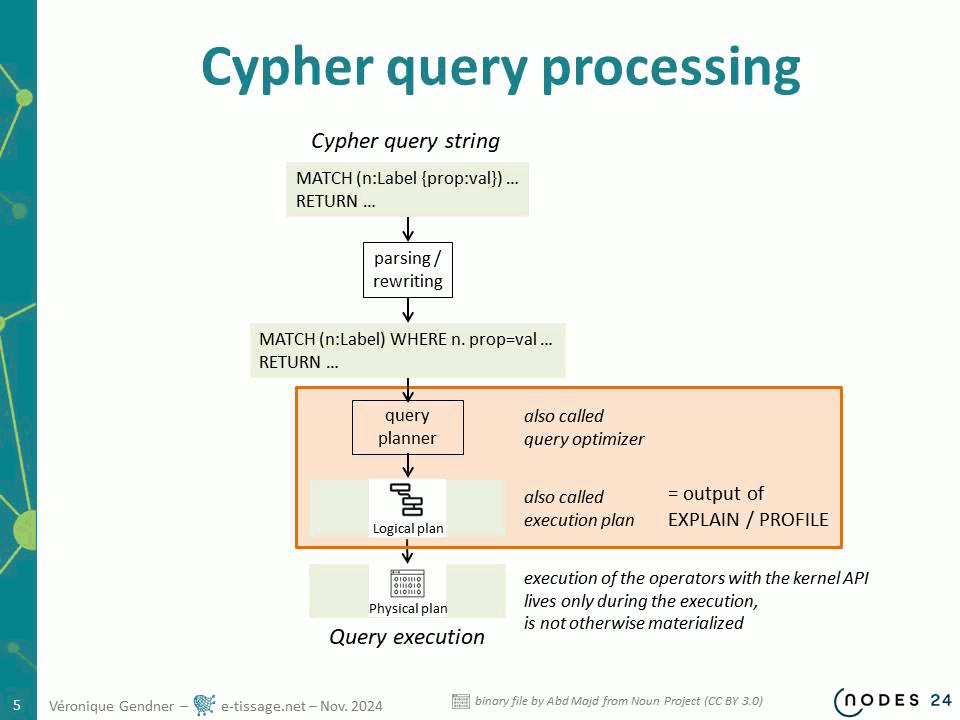
Knowledge Graph Conference demo session : Neodash
Graphs are a very useful formal structure because you can represent in one place, the precise complexity of your data, by interrelating lists, hierarchies, categorizations and tables. You can also avoid being lost in complexity by choosing what to expose for a specific purpose, in any of those more basic formal structures.
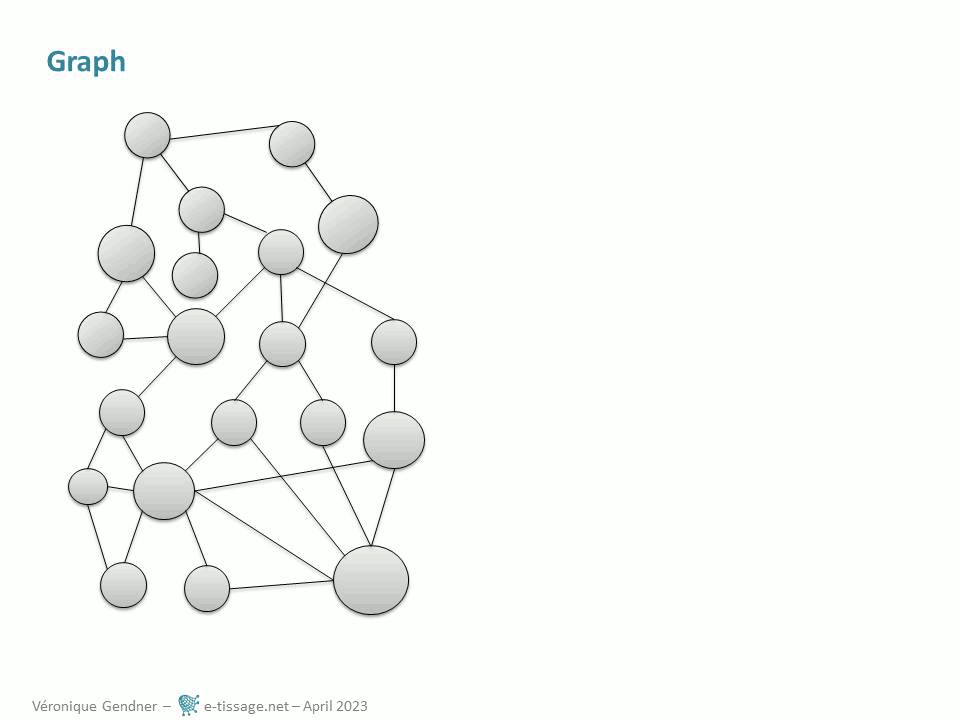
NODES 2022 : Genealogy with different graph technologies for data collection & visualization
Graphs are a very interesting structure to get the best of human thinking combined with automatic processing. Through a very intuitively graph based use case – genealogy – the following presentation at the Nodes 2022 conference takes genealogical researches as an example to illustrate possibilities that can be applied to many domain of research. It is demoing several graph issues and technologies, from data collection to visualization, including data transfer from one app to another:
- documentation collection, in a graph structure, with TheBrain Technologies application,
- Gramps visualizations based on a family tree specific layout algorithm
- Bloom for visual and interactive exploration of data structured in graph and
- yWorks to make precisely selected information of interest, stand out on a graph display
- as well as Neo4j graph database as a pivot technology, to make use of graph topology and graph pattern matching
Data collection and export/import process from TheBrain to Gramps via Neo4j are presented, graph models are discussed.
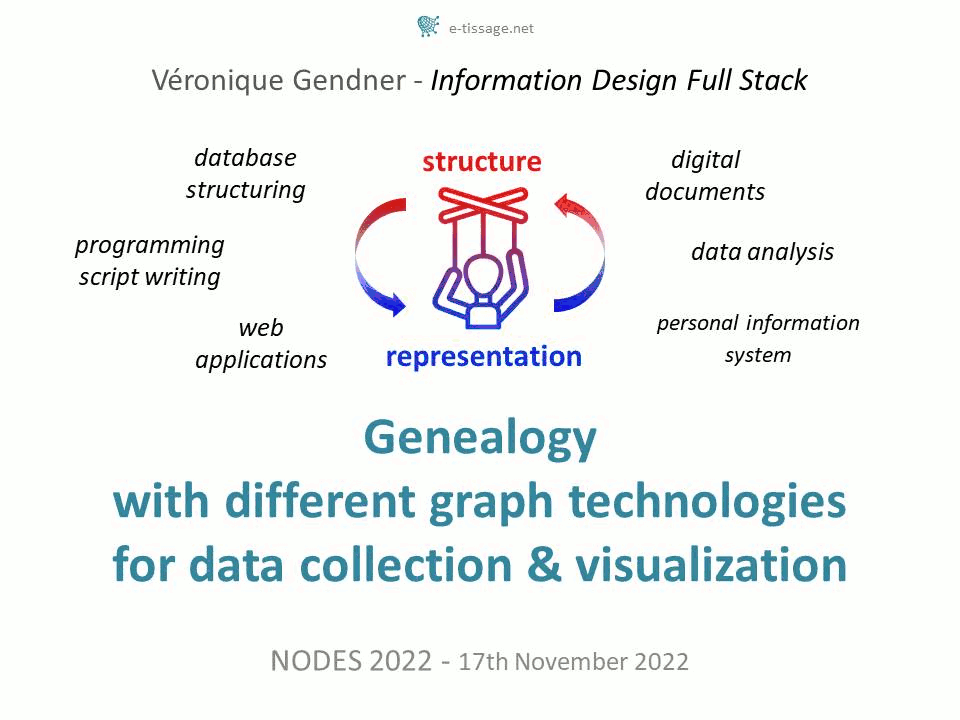
GeoGraph : Modelling and building a graph database of multi-source landmarks to help emergency mountain rescuers
The purpose of the Choucas research project is to come up with methods, tools and resources, to help mountain rescue team localise victims, when answering emergency calls. In this context, we have built a graph data base with the Neo4j Label Property Graph (LPG) technology, that integrates several sources of geolocated objects. Some data comes from the national mapping agency (IGN BDTOPO), others, like routes from crowdsourcing websites. Categorization of multi-source imported data has been normalized by an instantiation process based on the Landmarks Objects Ontology (OOR) that had previously been produced by the project team.
The flexibility of graph databases helps make the right modelling choices by progressively taking into account problems observed in the data as well as researchers and users feedback and new needs.
A more in depth presentation of this work, with a demo of a python script to display the content of the database on a map, with QGIS can be seen here.
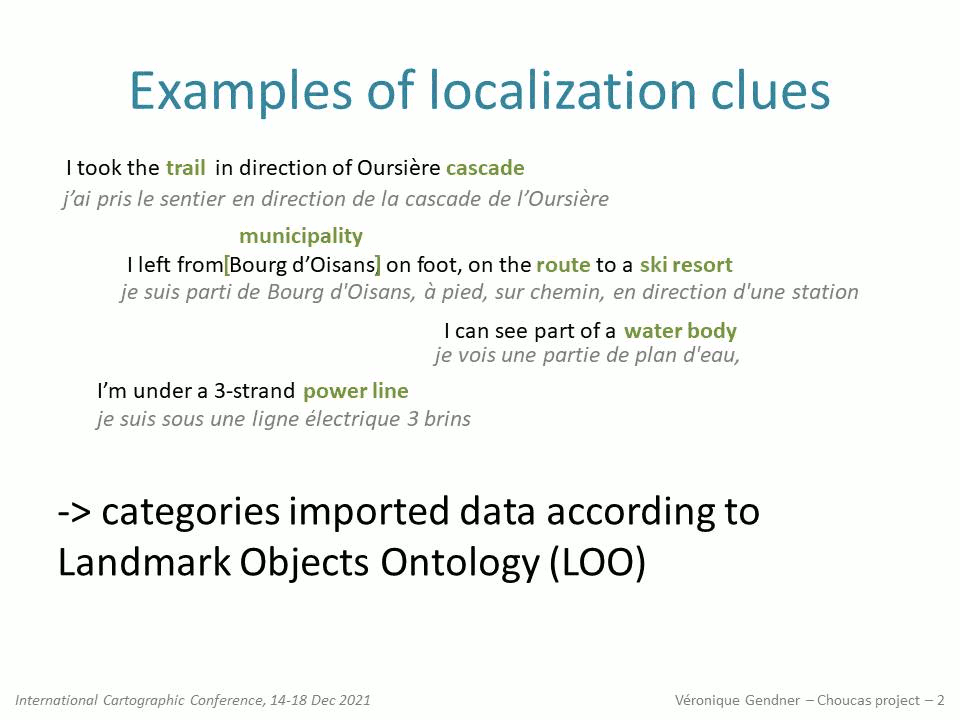
Here is the presentation of this work done at the International Cartographic Conference, on 15th Dec. 2021 : Lire la suite »
NODES 2020 : Using Cypher to Extend a Graph-Based Documentation
At NODES2020, I’ve presented about graphs for humans : how to manually build a graph structured documentation with TheBrain Technologies, and why this graph writing is so useful.
Also how cypher (Neo4j *) can be used to automatically extract tables or hierarchies needed for specific contexts of use of this documentation.
Along the way, I’ve exposed some ideas about Information Design, the way I see it, that is including all that concerns representation of information but also structuring and the way they are interrelated.
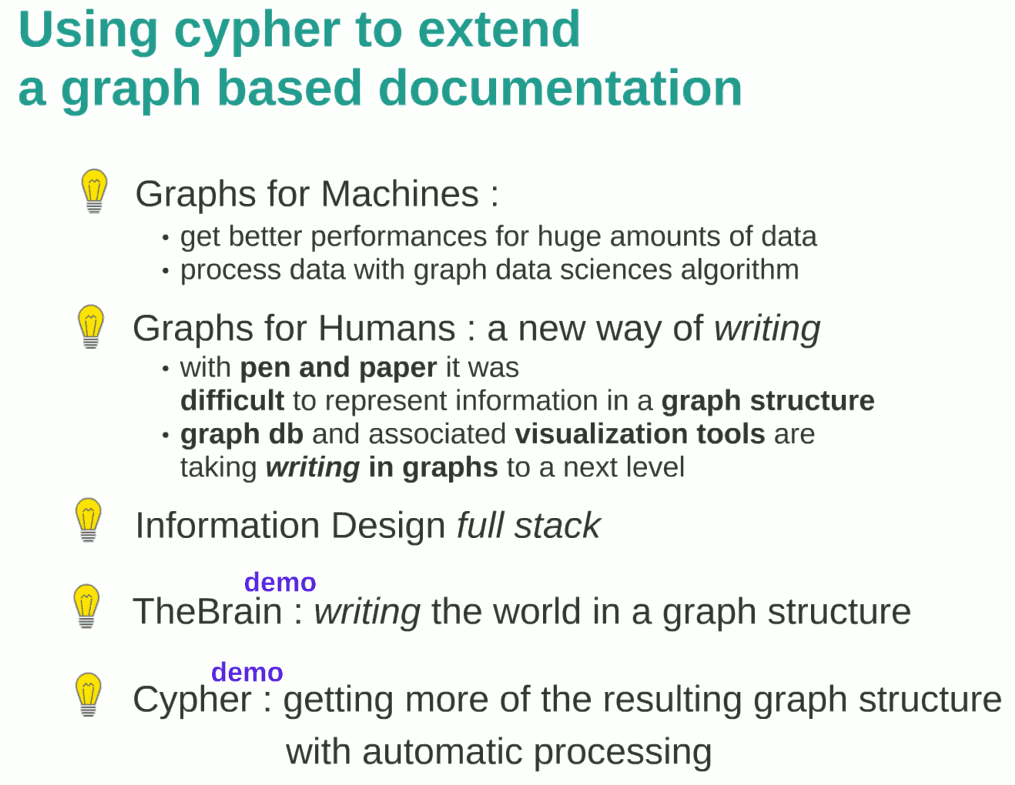
 alerte email - nouveaux articles
alerte email - nouveaux articles fil RSS - nouveaux articles
fil RSS - nouveaux articles Véronique Gendner, e-tissage.net
Véronique Gendner, e-tissage.net